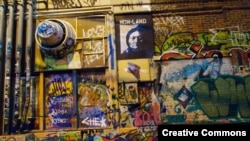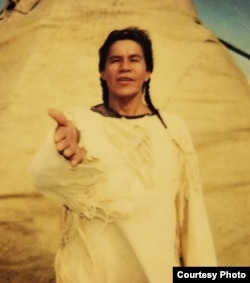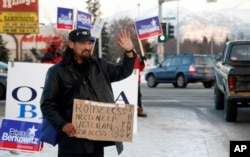Webster Allen Two Hawk Jr. had not had a drink in six weeks – one of the conditions for getting a bed at the Rapid City, South Dakota rescue mission. But the 55-year-old Sicangu Lakota artist had received some bad news that cold day in March: All of his artwork had been stolen.
In his distress, Two Hawk got drunk with friends in a downtown park. When he returned to the mission to sleep, he was turned away.
“So, my brother sat down by some of those big electrical boxes near Memorial Park, probably to get a break from the wind,” said Castle LaCroix Kelly. “And that’s where they found him the next morning. Frozen to death in the snow,” she said.
South Dakota is home to nine federally recognized tribes, and its reservations are among the poorest in the country. Tribal members flock to Rapid City in search of jobs, but often end up on the streets.
The Black Hills Regional Homeless Coalition makes annual counts of Rapid City’s homeless population to gauge funding needs. This year, it counted more than 240, most of them Native American. But the numbers likely are much higher.
“We are unable to count those who are in jail, detox, living in hotels, doubled up, or ‘couch surfing.’ All of those situations are still situations of homelessness, and those individuals are living in situations that are far from appropriate, safe or ‘housed,’” said Anna Quinn, executive director of the HOPE Center, a faith-based group serving Rapid City’s homeless.
Mean streets
Shane Boudreaux, Sigangu Lakota, has been homeless several times, and knows firsthand how rough the streets can be.
In 2002, the National Coalition of the Homeless rated Rapid City the third most dangerous U.S. city for the homeless—especially Native Americans. Cut off from family and culture, they are vulnerable to alcohol, drugs and violence. Sometimes they are harassed by the locals. And sometimes their lives are cut short.
“One of my friends died here just a few weeks ago,” said Boudreaux. “They found him floating in Rapid Creek. Police said he was riding his bike and must have hit a railing and fallen off the bridge into the water.”
Homeless women are particularly at risk, said one Lakota woman who asked not to be named.
“I’ve been raped. I’ve had things thrown at me. I’ve had my purse ripped off my shoulder. I’ve been left behind by my boyfriend after getting beaten. I’ve been called names.”
She said she doesn’t believe authorities take these crimes seriously, and said local police are harder on Native Americans than other groups.
A 2015 study on race disparities in Rapid City policing showed more Native Americans are arrested than other group in the city, and that police were more likely to use force against Native Americans than any other race.
Rapid City Police Chief Karl Jegeris admitted to age-old tensions between Native Americans and the city’s population, but denied that his officers are heavy-handed.
“I think that in comparison to other cities that I’ve been to, I would say we’re a much safer city for our homeless population. We have a specialized street crimes unit that patrols downtown and park areas. We get to know the homeless on a first name basis and get along very well with them generally,” he said. “But there are certainly exceptions.”
When Native American homeless are arrested, Jegeris said, it is usually for low-level crimes, such as drinking in public or disorderly conduct. But more serious conflicts sometimes arise.
“Due to historic and generational trauma issues, there is a lot of distrust in the Native American community, especially toward authority figures,” he said. “And unfortunately, law enforcement is the most visible sign of government authority. So, we run into conflict somewhat regularly when we are just trying to help ensure general safety for that person.”
Investing in tribes
Rapid City is looking to expand services and shelters for the homeless. But the National American Indian Housing Council (NAIHC) believes the fundamental problem is the shortage of suitable housing on reservations.
“It’s a lot harder to get capital investment in these communities,” said NAIHC executive director Tony Waters. “Building homes on reservations is more expensive because of the lack of infrastructure in these areas. So, the budget cuts we’ve seen proposed by the administration this year certainly would be bad news for Indian Country.”
The Department of Housing and Urban Development (HUD) provides tribes with $650 million in housing grants, under obligation by historic treaties. President Donald Trump has proposed cutting that amount by $50 million, which Waters said would devastate communities already living in poverty.
Back in Rapid City, Anna Quinn worries about the fate of programs like the HOPE Center.
“Any reduction in budget would also be detrimental to those who are working so hard to help the homeless get out of their situations,” she said.










